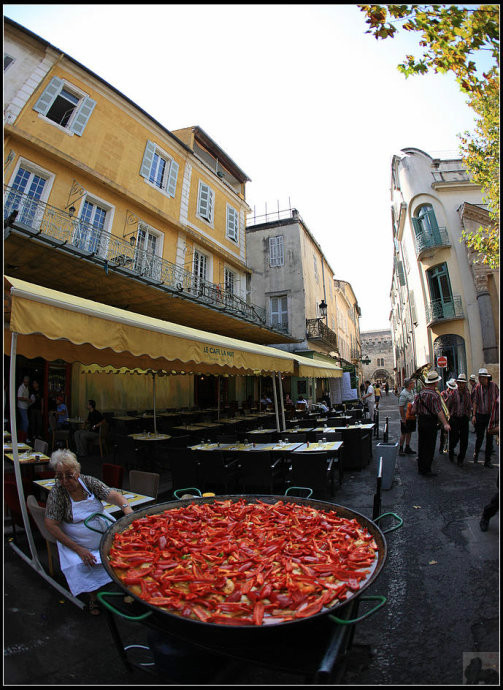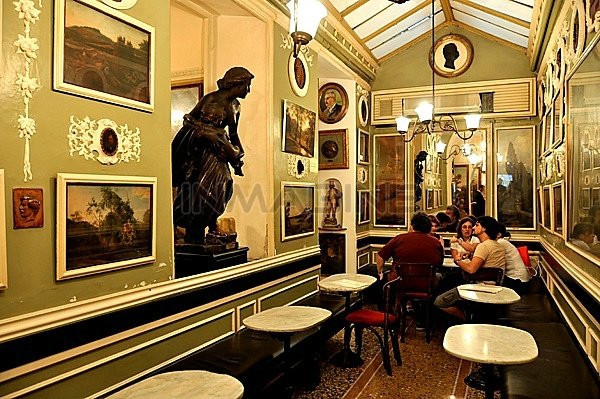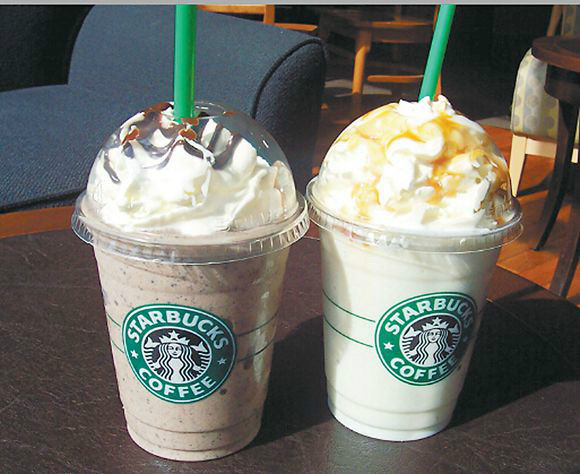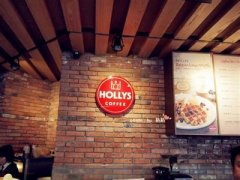There are a lot of stories in cafes. There are stories in cafes all over the world.
I am not at home, in the coffee shop, not in the coffee shop, on the way to the coffee shop! This is a note from a Viennese artist to his girlfriend, from which you can see the position of the cafe in the eyes of Westerners. Cafes have played an important role in Western history. Therefore, do not underestimate these cafes, their stories are not simple.
Barcelona "four Cats" Cafe
Remember the cafe where Antonio invited two American girls, Vicky and Christina, to travel together in "Midnight Barcelona", the famous "four Cats" Cafe in Barcelona? the place where Spanish modernist artists such as Picasso met all the year round. The ancient "four Cats" cafe is also mentioned many times in the famous Spanish best-selling novel Shadow of the Wind, where the protagonist Danielle's father and mother meet and fall in love.
"four Cats" is a cafe in Barcelona, CasaMart í, located at 3 Montsi ó Street in the old city. It was opened in 1897 by the artists Ramon Casas Carbo and Perelomeu. The name of the store is simple and humble. From a Spanish proverb, "four cats" is often used to describe places where few people visit. In the spring of 1898, Picasso joined the "four Cats" club under the introduction of young poets. At that time, artists, political activists, poets and hooligans stayed up all night. Picasso was only 18 years old at that time, even more nameless without money, but he soon became the central figure of the "four cats" because of his unique temperament and talent.
Today, however, because Picasso used to hang out here in his early years and held his first solo exhibition, the cafe has not only become a popular place, but also become an important place for textual research on the history of modern art. It is worth mentioning that its first menu was designed by young Picasso.
St. Petersburg "Literary Cafe"
On January 27, 1837, Pushkin drank his last cup of coffee from this dessert shop and went directly to the duel site "Little Black River". Not only that, Lementov, Dostoevsky, Shevchenko and others are often guests here. Today, the literary club "Literary Coffee" is established here.
This is a two-story building. There is a Pushkin statue on the first floor: he sits at the table with a quill in his hand, is conceiving a new line of verse, and has a black top hat beside the table. The second floor is the text cafe. Next to a grand piano, there is a marble bust of Pushkin, and there are several landscapes of St. Petersburg hanging on the wall, in a more elegant style than the first floor.
If you are lucky enough to travel to St. Petersburg, you must go here for a cup of coffee and feel the literary excitement of the writers and the final passion and romance of the poets.
Van Gogh's Cafe (Night Cafe in Arles)
Night Cafe in Arles
"the exterior of a cafe has a balcony illuminated by a big gas in the blue night sky, and a blue sky shining with stars in one corner. I often think that night is more lively and colorful than day. "--Van Gogh
Van Gogh's Lancassel Cafe, which Van Gogh borrowed from May to September 1888, is located in the form Square (PlaceduForm). It is called the "Night Cafe" because it is open all night. When Van Gogh was in Arles, he began to paint a brilliant starry night on the canvas. After nightfall, he set up an easel, fixed a circle of small candles to the brim of his hat, and painted the starry sky by candlelight. He wandered through the streets of the village, stopping under the streetlights from time to time to capture the view of the night sky, which was like a shining blue curtain against the swarthy roof and house. Occasionally a yellow light poured out of the open door.
Van Gogh loves the different levels of blue in the southern sky, like the bright yellow of the earth in the sun. His works in Al often mix these two complementary colors to make the picture bright and gorgeous. Here, Van Gogh depicts the outdoor scene of the cafe. The bright lights of the room sprinkled on the cobblestone square outside, and in the dark blue night sky, the stars twinkled like brilliant lanterns. The atmosphere of the whole picture is warm and comfortable, which is in sharp contrast to the indoor scenery of his cafe. Van Gogh used white and bright yellow to depict the stars in the sky with only a few strokes. The dark blue strokes are dyed around, and the blue gradually fades, and the strokes crisscross, resulting in the effect of starlight. On the other hand, the ground, which is opposite to the starlight, is formed by different shades of brush strokes, while black strokes are used to represent pebbles on the ground.
The first part of the starlight trilogy of the Starry Night.

More than 100 years after Vincent finished the painting, the cafe has always been a place for people in Arles to drink, and it is now called Van Gogh's cafe, which still retains the yellow awning and everything.
Greek Cafe in Rome (Antico Caff Greco)
The prestigious Greek cafe is located on ViaCondotti near the Piazza de Spain. Marble tables, sofa seats, waiters in tuxedos, countless mirrors, the illusion of going back in time makes people feel as if they were in the elegance of 1760. For decades, Greek cafes have become a must in Rome for holidays, and the caramel macchiato here is delicious and attractive. Keats, Byron, Shelley, Ibsen, Chopin and Liszt are all guests here, and the famous German writer Goethe's Princess of Tarives was also completed here.

The ancient Greek cafe was a deep and slender multi-hall structure. First of all, entering the cafe is for those who come in a hurry and are prepared to stand at the coffee counter for those who are in a hurry and have precious time. The coffee guests lined up to order all kinds of coffee, paid the bill, waited for the coffee to be cooked, stood aside to drink and talked, and then hurried off. For those who have plenty of time and want to kill time, they will walk into the coffee shop as soon as they enter the coffee shop, either find a sofa or sit around a round glass table. In a moment, a waiter in a black tuxedo will come to order a drink for you. The walls of the hall are red, covered with famous paintings with gold-painted frames, celebrity handwriting and broad mirrors, coupled with the lighting of classical European wall lamps on the walls, making the halls very bright. Customers watch the pedestrians coming and going on the street while drinking coffee, and pedestrians often look at them, unable to tell who is the audience and who is the customer.
The Italian cafe is a social place, it creates a public space, leveling the class distinction, as the price falls, people from all walks of life can go for a drink and participate in the chat. A lot of news comes from cafes. Cafes are the first lesson to learn about Italy, but you have to learn to look like a local. The cheerful Italians have strict rules when it comes to drinking coffee. Generally speaking, espresso is used 24 hours a day, but if you want to order cappuccino, it must be before 10:30 in the morning.
Prokop Cafe
The table used by Rousseau in the Prokop Cafe.
"the cafe counter is the parliament of the people." Balzac, a great French writer who is good at writing about social attitudes, once wrote. The French Revolution, the Enlightenment, Existentialism and other political, social and cultural thoughts all moved from the cafe to the society. The Prokop Cafe, the oldest coffee shop in existence, was opened in 1686 by Francesco Procopio Cadri, an Italian. Today, a hundred years later, the traditional decoration here is still simple and elegant. Its former regulars include 18th century European Enlightenment thinkers Voltaire and Rousseau, where Diderot, the author of the world's first encyclopedia, wrote works that influenced the process of revolution and social development in Europe and the United States.
The Rochope Cafe, which was brewing the French Revolution, is regarded as a symbol of the rise of Paris Cafe culture in France.
To this day in France, we can still find traces of this political feature in some cafes: members of the National Assembly are often seen in cafes next to the Houses of Parliament; political enthusiasts in France often gather in cafes to talk about politics. Unlike during the Great Revolution, people's discussions on political topics are no longer so enthusiastic, but take place in a very calm and relaxed atmosphere.
Double Old Cafe
The double Old Cafe, which opened in 1875, was once a stronghold of "surrealist" artists and a meeting place for "existential" writers.
The double Old Man Cafe, located on the Boulevard Saint-Germain on the left bank of Paris, is next to the Flower God Cafe on the right, and the Lip Brewery across the street, while the oldest St. Germain Church in Paris is directly opposite to the "double Old Man".
In the 1940s and 1950s, the double Old Cafe was an existential writer and philosopher such as Sartre and Simon. The place where Beaufort, Camus and others often meet. Simon. Beaufort wrote in her diary: "I sat in the coffee shop and stared at the blank paper on the coffee table." I can feel my fingers moving. I need to write. Actually, I want to write about myself. The first thought that arises is: what is the meaning of being a woman? " This is the origin of Simon Beaufort's masterpiece second Sex. Beaufort is a feminist writer who promotes the feminist movement all her life. In her masterpiece second Sex, she fiercely criticizes the prejudice against women in the patriarchal society and the natural disadvantage of women in society.
There are two legends about the origin of the name of Shuangshuo Cafe. The first is that it used to be a hat shop of the same name on the same street and was finally replaced by a cafe. The second legend is that it was inspired by the trademark of a Chinese Qing Dynasty product. So, to this day, on the square pillar in the middle of the cafe hall, there are still two wood carvings of Chinese Qing Dynasty officials, staring surrealistically at the coffee drinkers. If you don't like their eyes, you can move out to the open-air cafe and echo the French philosopher Descartes, who lies opposite in St. Germain's Cathedral. Quietly ponder the "philosophical" question of "existence by drinking coffee" or "drinking coffee because of existence".
Starbucks of the CIA
Compared with the previous cafes, this Starbucks is undoubtedly young. And the reason why he appeared is literally. Starbucks, the Starbucks of the CIA, which is only open to some people, is not excessive to say that it is a limited edition of Starbucks. The baristas here are probably the most exciting baristas in the world!

Literally, Starbucks of the CIA! Located on the ground floor of the CIA headquarters, there is an "anonymous" Starbucks, which CIA staff are used to calling the "Secret Starbucks."
This store may be the busiest Starbucks in the United States, and the people who come here for coffee are often economists, engineers, geographers, etc., who are either gathering intelligence or planning secret operations. Even many job transfers within the CIA are appointed here. They meet here every day. The coffee cups they use are often given a name to avoid confusion, but these people can only write an alias.
The nine baristas in the store, who have undergone a full background check, leave the building under the supervision of agents every day and are not allowed to brag about their place of work to others. At most, they say that they work in a federal building.
Source: China net Travel
Important Notice :
前街咖啡 FrontStreet Coffee has moved to new addredd:
FrontStreet Coffee Address: 315,Donghua East Road,GuangZhou
Tel:020 38364473
- Prev

Chinese coffee chain joins to investigate the first generation of coffee chain brands
The earlier domestic coffee chain brands, which can also be called the first generation of coffee chain brands, were mainly joined by the Shangdao coffee chain created by Mr. Chen Wenmin, and later many coffee chain brands named after: * * Island. The main layout is more in the southern cities, characterized by: soft decoration environment, more middle-aged customers, the products mainly use Taiwanese style siphon pot to make coffee and Chinese and Western.
- Next

As a "wedding dress", it is better to be a brand to see how Hougu Coffee develops its power in the two markets.
As we all know, coffee belongs to the top three beverages in the world. According to legend, in 1892, French missionaries introduced coffee to Binchuan County, Dali Bai Autonomous Prefecture, Yunnan Province, which opened the process of growing and developing coffee in China. So far, coffee has been planted for more than a hundred years in China. Today, Yunnan has become one of the major coffee producers in Asia, and many coffee giants
Related
- What brand of black coffee is the most authentic and delicious? what are the characteristics of the flavor of the authentic Rose Summer Black Coffee?
- Introduction to the principle and characteristics of the correct use of mocha pot A detailed course of mocha pot brewing coffee is described in five steps.
- Which is better, decaf or regular coffee? how is decaf made?
- How much is a bag of four cat coffee?
- How about four Cat Coffee or Nestle Coffee? why is it a cheap scam?
- Which is better, Yunnan four Cats Coffee or Nestle Coffee? How about cat coffee? is it a fake scam? why is it so cheap?
- How about Cat Coffee? what grade is a hoax? which instant coffee tastes better, four Cat Coffee, Nestle Coffee or G7 coffee?
- Process flow chart of coffee making-Starbucks coffee making process what coffee tastes good at Starbucks
- The top ten best coffee beans in the world Rose summer coffee or Tanzanian coffee tastes good
- Yunnan four cat coffee is good to drink?_four cat coffee is a big brand? four cat blue mountain coffee is fake?

